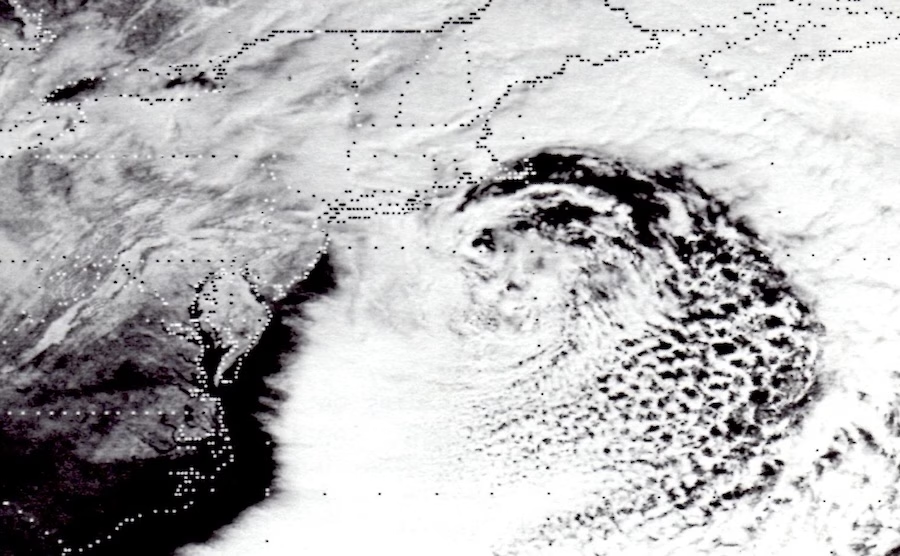On February 6, 1978, Long Island faced one of its most powerful and unforgettable winter storms: the Blizzard of ’78. For 33 hours, snow fell relentlessly, accompanied by hurricane-force winds that created massive drifts and stranded thousands. While meteorologists had correctly predicted the storm’s severity, skepticism due to a previous missed forecast left many unprepared for what was to come.
As snowflakes began to fall on that Monday morning, some commuters brushed off the warnings, assuming it would be another overhyped forecast. They couldn’t have been more wrong. The storm intensified rapidly, blanketing Long Island with up to two inches of snow per hour, crippling the region for days.
We’ve had Snowpocalypses and Snowmageddons since then, but the Blizzard of ’78 remains iconic in the minds of Long Islanders who endured it. Here are some jaw-dropping facts about this historic storm:
- Unbelievable Snow Drifts: Some areas reported snow drifts as high as 15 feet.
- Heroic Firefighters: The Mastic Beach Fire Department rescued two women in labor and transported them to the hospital during the storm.
- Lost Vehicles: Two four-wheel-drive vehicles from Fire Island National Seashore were washed out to sea after becoming stuck.
- Storm Size: The blizzard spanned an estimated 1,500–2,000 miles in diameter.
- Heartbreaking Loss: Newsday reported three deaths on Long Island due to apparent heart attacks.
- Abandoned Cars: Over 3,000 cars were abandoned, and 2,000 stranded motorists had to take shelter in firehouses, schools, restaurants, and more.
- Heating Oil Crisis: Many homeowners worried their heating oil would run out before deliveries could resume.
- Snow Totals: Ronkonkoma recorded 26 inches, Riverhead saw 24 inches, and Plainview got 23 inches.
- MacArthur Airport: Snowfall at the airport reached a staggering 25.9 inches.
- Ferocious Winds: Gusts on Long Island hit speeds of 80 MPH.
- Economic Impact: The storm caused over $520 million in damage across the Northeast (equivalent to $2 billion today).
- Thundersnow: Lightning and thunder accompanied the snowfall, a rare meteorological phenomenon.
- Formation: The storm originated off the coast of South Carolina and traveled north, where it wreaked havoc.
- Previous Storm: It followed a surprise January blizzard that had already dumped up to 18 inches of snow in some areas.
- Post-Storm Fun: Local skiers dug out the Farmingville Ski Bowl at Bald Hill for some winter recreation after the storm.
- Meteorological Mayhem: The storm’s intensity was so unexpected that it overwhelmed forecasters, leading to improved snowstorm prediction models in the years that followed.
- The Lost Long Island Railroad: For several days, the Long Island Rail Road was completely out of service, a rare occurrence that highlighted the storm’s severity.
- A Valentine’s Day Storm: While Long Island saw its worst snow on February 6-7, parts of New England received additional snow closer to Valentine’s Day, compounding the region’s woes.
- Snow Piles That Stayed Until Summer: The massive snowdrifts took months to melt, with some remnants lingering until June in parking lots where plows had piled them.
The Numbers Don’t Lie
The storm dumped a staggering 30 inches of snow on Long Island, with some areas reporting drifts as high as 15 feet. Winds gusted at over 60 miles per hour, creating whiteout conditions that rendered visibility almost nonexistent. For 33 hours, Long Island was at a complete standstill. Schools, businesses, and roads—including the Long Island Expressway—were all shut down, leaving many stranded in their homes or vehicles.
A State of Emergency
The severity of the storm led to a state of emergency being declared across New York. For the first time, snowmobiles became a critical mode of transportation for emergency services. Hospitals relied on these vehicles to transport patients, and volunteers used them to deliver food and medicine to those in need. In some areas, the National Guard was called in to assist with rescue and relief efforts.
Community Resilience
Despite the chaos, the Blizzard of ’78 showcased the resilience and ingenuity of Long Islanders. Neighbors banded together, shoveling out driveways and clearing paths for emergency vehicles. Makeshift shelters were set up in schools and community centers for those who had lost power or were stranded away from home. Radio stations became lifelines, broadcasting updates and messages from loved ones.
The Blizzard of ’78 wasn’t just a storm; it was a defining moment in Long Island’s history, showcasing the resilience and resourcefulness of its residents. From rescuing stranded motorists to making the best of a snowed-in ski hill, Long Islanders faced the storm’s challenges head-on—and made memories that still warm hearts today.




